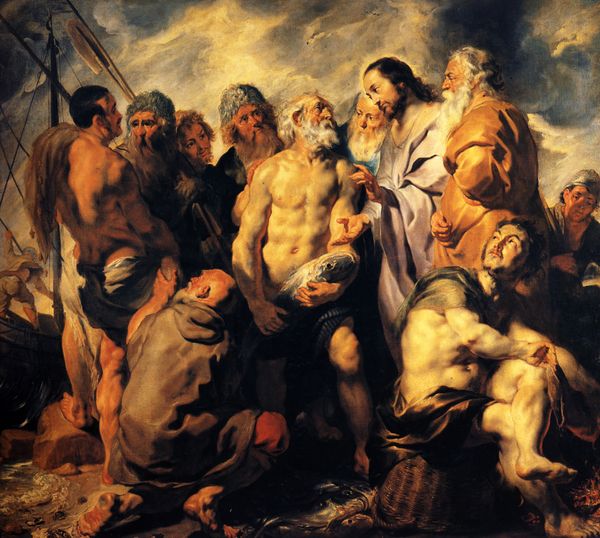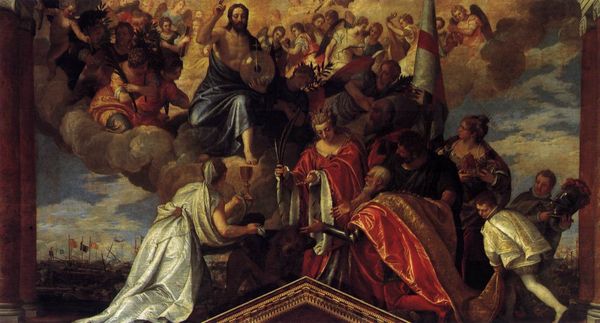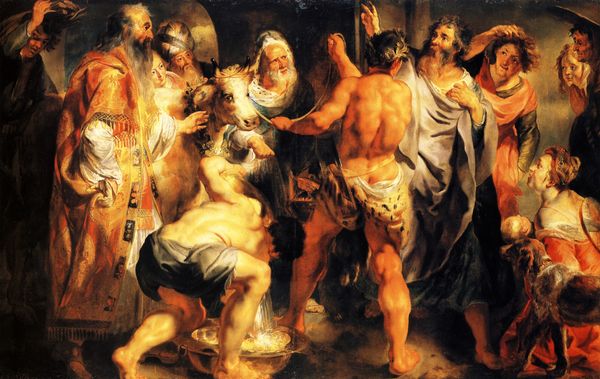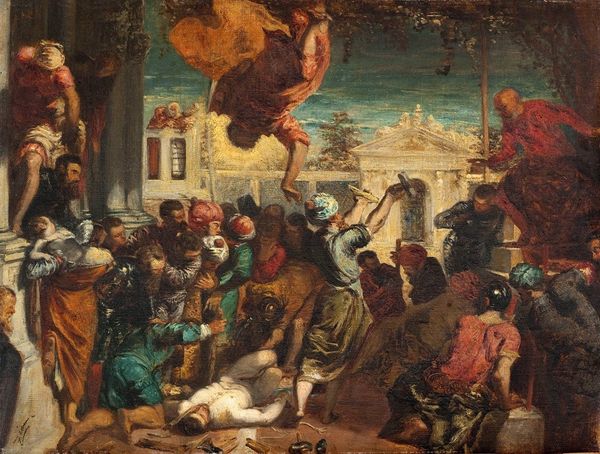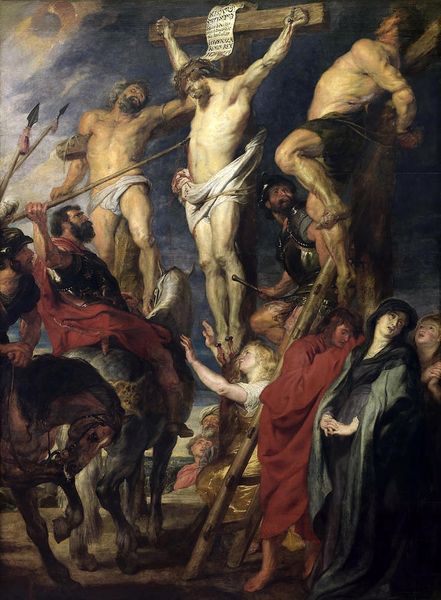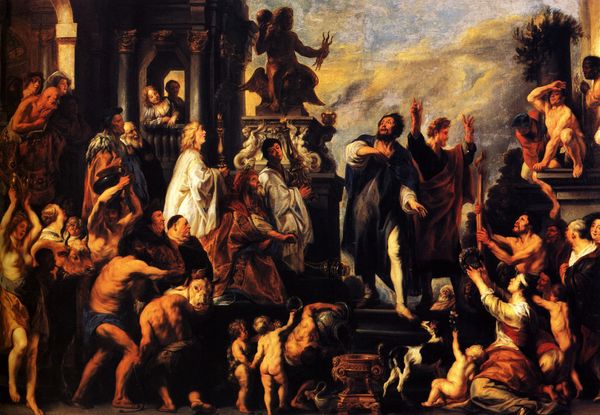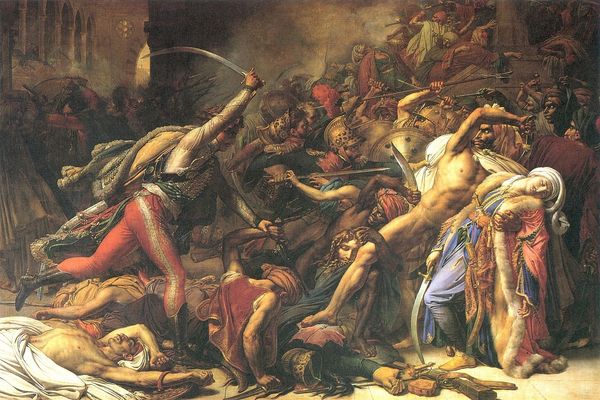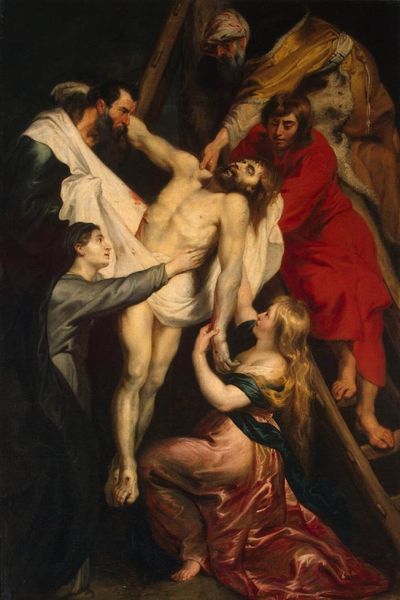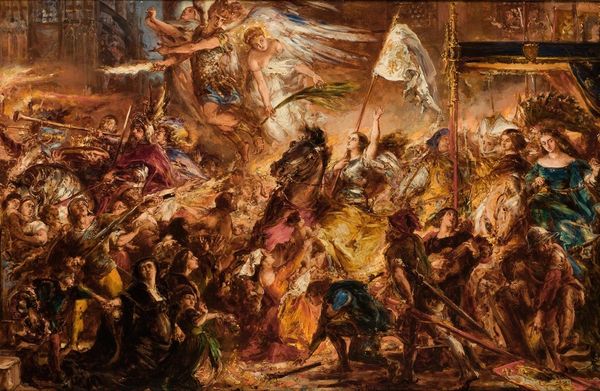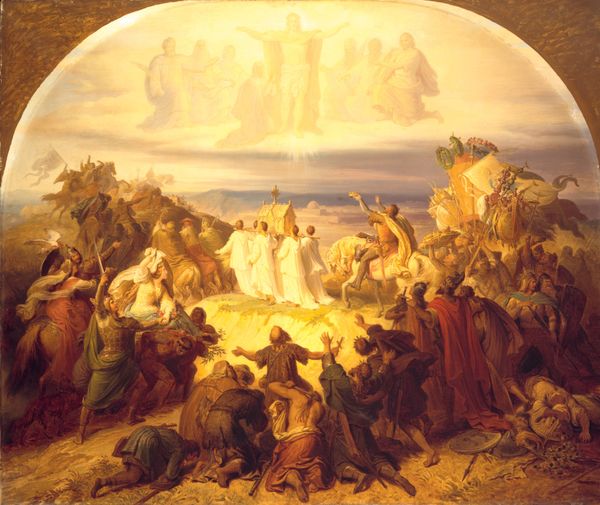
painting, oil-paint
#
narrative-art
#
baroque
#
painting
#
oil-paint
#
figuration
#
oil painting
#
chiaroscuro
#
history-painting
Dimensions: 123.6 x 89.5 cm
Copyright: Public domain
Editor: Rembrandt van Rijn’s oil on canvas, “The Stoning of St. Stephen,” painted around 1625, is incredibly dramatic! The lighting is so intense, focusing all the attention on the figure of Stephen. How do you interpret the symbols and imagery Rembrandt uses in this work? Curator: Well, look at the clear visual language. The dynamic poses signify violent action. But consider this event, the martyrdom of Stephen, a key moment in Christian narrative. Stoning, then and even today, is deeply tied to specific concepts of communal retribution and purification. What cultural memories does the act of stoning evoke, and how are those transferred into and expressed through painting? Editor: That’s a powerful point. It’s hard to ignore the psychological weight of such a public execution. So is Rembrandt specifically trying to address or trigger something? Curator: Definitely. Rembrandt uses chiaroscuro, that contrast between light and dark, not just to create drama but to emphasize Stephen's purity against the darkness of the crowd's sin. Notice his upward gaze—what does that symbolise? It’s a reference to something beyond the immediate mortal danger, offering a way to convey that Stephen saw heaven open and Christ standing at God’s right hand. Editor: The gaze does feel intentional, offering some sense of salvation amidst brutality. This painting almost demands the viewer to confront our own historical understanding of persecution. Curator: Exactly! And how collective actions can solidify identity through violence, an association Rembrandt acknowledges. By studying how such cultural traumas manifest in paintings like this, we can begin to unpack their emotional legacies and maybe even how we repeat such actions over time. Editor: Thank you, that brings new perspective to Rembrandt’s artistry, to view not just the scene, but to recognise the deeper meanings behind historical imagery. Curator: And for me, a reminder to contemplate not only the theological narratives but the painful realities of persecution across centuries that artworks sometimes illuminate.
Comments
No comments
Be the first to comment and join the conversation on the ultimate creative platform.
